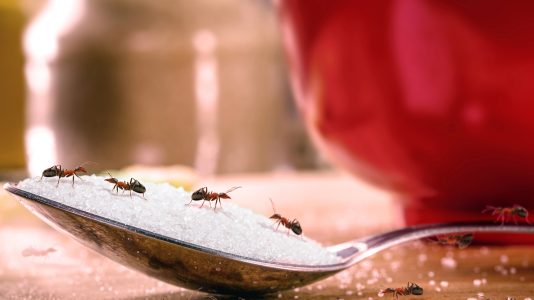10 Places to Check in your Home to Keep Out Unwanted Insects
November 16th, 2020
Insects might seem far from top-of-mind as the winter cold approaches, however many homeowners will find themselves in the company of unwanted critters in the coming months.
- How do insects get inside homes in the fall and winter?
- Where should I look for bugs in my home?
- What can I do to keep insects from coming into my home?
The pest specialists at BW Nature Control serving Ottawa and Gatineau share their tips for favourite insect entry points and simple tactics for keeping bugs out during the colder months in the National Capital and Outaouais regions.
Here are 10 common places to check in your home to keep out unwanted insects:
1. Food storage
Even in the winter, fruit flies and other insects can thrive in homes and so it is important to keep your fruit bowls free from rotting or over ripe fruit and regularly sort out your potatoes and carrots that might be stored in a cold room or root cellar. Opened bags of flour, rice or other grains and cereals are also prime breeding grounds for weevils and should be inspected regularly to ensure that they are properly sealed and bug free.
2. Pets
As insects settle into dried leaves, grass and other brush for the winter, there remains a risk that pets (and leave romping children, for that matter) can transport the sleepy insects and/or eggs into your home after being outside. Remain diligent in your usual inspection for ticks, fleas, and other unwanted pests.
3. Windows
Beyond the obvious cracks in window panes (fix those!) insects can find numerous ways to enter your house through ill fitted window frames and sills. Any gaps between your window frame and your walls should be filled with silicone caulking and could even require some shimming first if the gap has grown too large as your home has shifted and settled. Insects are also notorious for finding the small holes left open by unlatched window locks so always return your locking mechanism to the closed position to keep that entryway closed to unwanted winter pests.
4. Doors
Doors that are no longer hanging straight on their hinges, or have missing or damaged door sweeps, seals, or weather strips are literally an open door to inviting insects into your home. As with windows in the section above, also be sure to fill any gaps and cracks in the space between your door frame and your wall and/or floor. Don’t forget pet doors and patio doors!
5. Garage
You should not be able to see any daylight around or under your garage door when it is fully closed. Adjust your tension spring if the door is not closing all the way to the ground, and replace any broken or missing weather stripping to make sure that insects do not have easy access to your garage during the winter months.
6. Flooring
In order to ensure that insects don’t have an easy route from the walls and basement into your main living spaces, check your flooring for holes, cracks and gaps and repair them as needed. Similarly replace or repair any missing or damaged sections of quarter-round that helps to secure the crack between the floor and the wall. Few floors are completely flush, so if needed, fill small cracks with silicone.
7. Roof
Insects can easily breach cracks in plywood and gain easy access to your attic and other voids above your garage, for example as a point of entry to your home. Soffits and fascia are also common nesting sites for insects, especially wasps and bees. Regularly inspect your roof to check for missing or damaged shingles or other roofing materials on and around the roof of your home.
8. Attic hatch
Attics are a hotbed for insect infestations due to the fact that there are multiple roof and wall joints, openings for vents and wiring, and numerous other spots that insects can crawl into. Ensure a proper seal for your attic hatch as a last line of defense between your vulnerable attic and your warm, cozy home.
9. Exterior Vents
Dryer vents, exhaust fan vents, gas fireplace vents, and wood-burning chimney vents are all popular portals for pests year round. Inspect your exterior vents every spring and fall to ensure that dampers and blades are not stuck, bent, missing or broken.
10. Exterior Cladding
Regardless of whether or not your home is covered with siding, brick, stucco, metal, or any other material, you will undoubtedly have numerous holes which penetrate your exterior walls for various cables, wires, metres, pipes, lighting fixtures, and even decor. Each of these holes should be properly sealed with caulking to keep bugs and insects from penetrating your exterior walls and finding their way into your wall frames, basement and attic.
With some diligence in inspecting these common areas for insects to gain entry into your home you should be able to enjoy the cozy warmth of your home this winter without intrusions by uninvited insects. Should you find that you are unable to keep on top of an infestation, however, or for more information about how to keep your home pest and insect free, don’t hesitate to reach out to the team here at BW Nature Control – we’re here to help!




